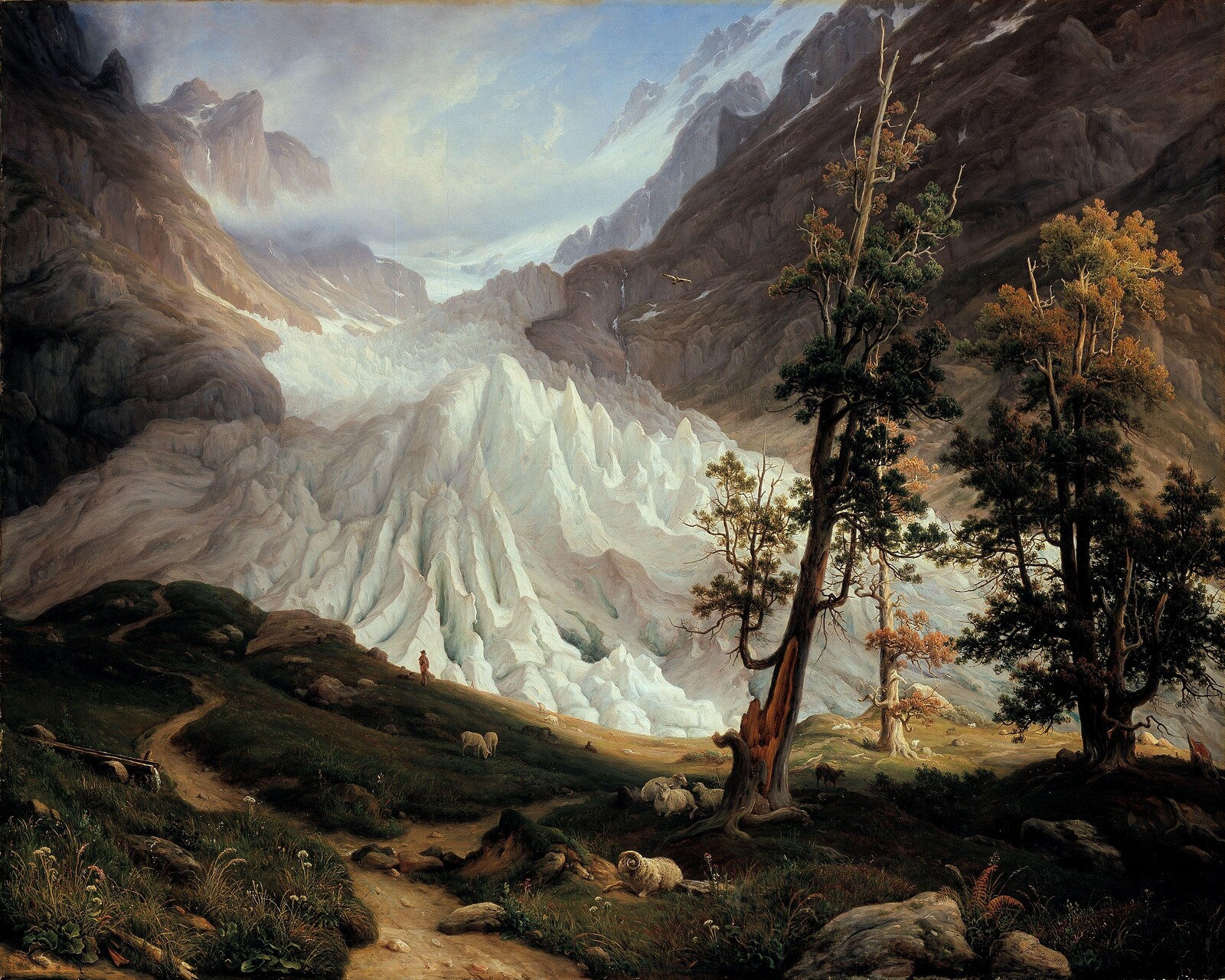The Museum of Contemporary Art
Bankplassen 4
0151 Oslo
Norway
The National Museum of Norway announces new PhD project in collaboration with the Fredriksen Family Art Company.
“The Grindelwald Glacier, from 1838, is a highlight in landscape painting by Norwegian artists”, says research fellow Trine Nordkvelle.
The Grindelwald Glacier (1838) is one of Norwegian romantic landscape painter Thomas Fearnley’s (1802–42) main works. Fearnley’s magnificent depiction of the Swiss alpine landscape is included in the National Museum’s permanent exhibition. 200 years ago, the glacier was massive. Now it has melted almost entirely. As the consequences of global warming unfold, Fearnley’s painting is gaining attention as a historic witness. A study published in 2022 concludes that Swiss glaciers lost half their volume between 1931 and 2016.
“The aim of my PhD project is to see Fearnley’s painting of Grindelwald Glacier from an eco-critical perspective. I will use Fearnley’s work as a witness to the Little Ice Age, in dialogue with the discourse on climate challenges in the period in which we now live”, says Trine Nordkvelle.
“The Little Ice Age” is a term used to refer to the climate from about the 1500s to the 1800s. During this period, glaciers grew, and the climate was noticeably cooler than in the Middle Ages.
In 1824 the Danish-Norwegian pioneering geologist Jens Esmark launched the idea of ice ages and resultant changes in climate. This idea was surely known to Fearnley. This makes Fearnley’s historical position interesting, working at the end of the Little Ice Age but also at the edge of the Anthropocene. Ecocritical art history has emerged as an interdisciplinary method that combines studies of environmental history, climate change and the Anthropocene. Even though the Anthropocene is a rejected scientific term, mostly used informally, it still describes the era when humans began making significant impacts on Earth.
“Fearnley as a witness of time is exciting. He painted at the very end of the Little Ice Age, just before the transition to modern times, and he was a travelling painter who spent lots of time outdoors. What do his pictures say about how people perceived nature in the 1800s? And how does he convey ‘wildness’ and the sublime? It will be exciting to delve into these questions”, says Trine Nordkvelle.
Eco-critical approaches to Art History
The eco-critical approach to researching art and art history is the common denominator of both research fellowships funded by the Fredriksen Family Art Company in collaboration with The National Museum of Norway and the University of Oslo.
The National Museum has agreed a doctorate-level collaboration with the Faculty of Humanities at the University of Oslo, involving four PhD fellows. While the first phd fellow Adine Lexow focuses on the textile artist Frida Hansen, her gardening and plant colouring techniques, considered in the light of contemporary art, gender theory, and ecocritical theory, the second, Trine Nordkvelle gazes upon the ever diminishing glaciers, and the result of human activity on a global level.
About the Phd fellows programme
The aim of the agreement between The University of Oslo and The National Museum is to strengthen the institutions’ research environments and to further develop scholarly contacts between these knowledge communities. The scholarship recipients will follow the Faculty’s PhD programme, even though the research grants are financially guaranteed through The National Museum’s collaboration agreement with the Fredriksen Family Art Company. This unique arrangement is beneficial for academic research within the museum field in Norway.
The individual researcher is of course able to work autonomously, without interference in the choice of methods, results, or forms of dissemination, from either of the parties responsible for the agreement. The first scholarship began in January 2024. The second now in late 2024. Subsequent recipients of the Fredriksen Scholarship will be announced in 2026, and 2027.
